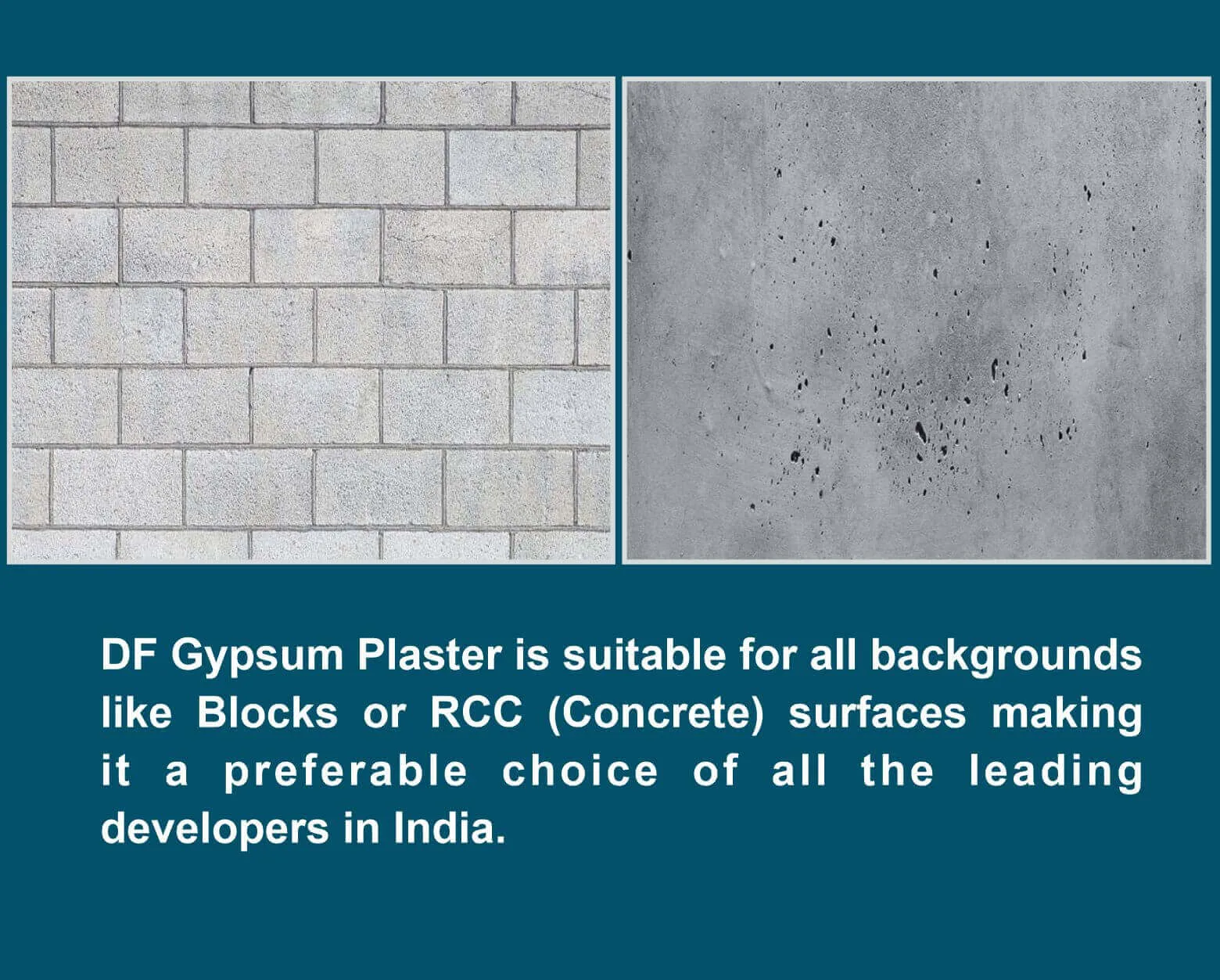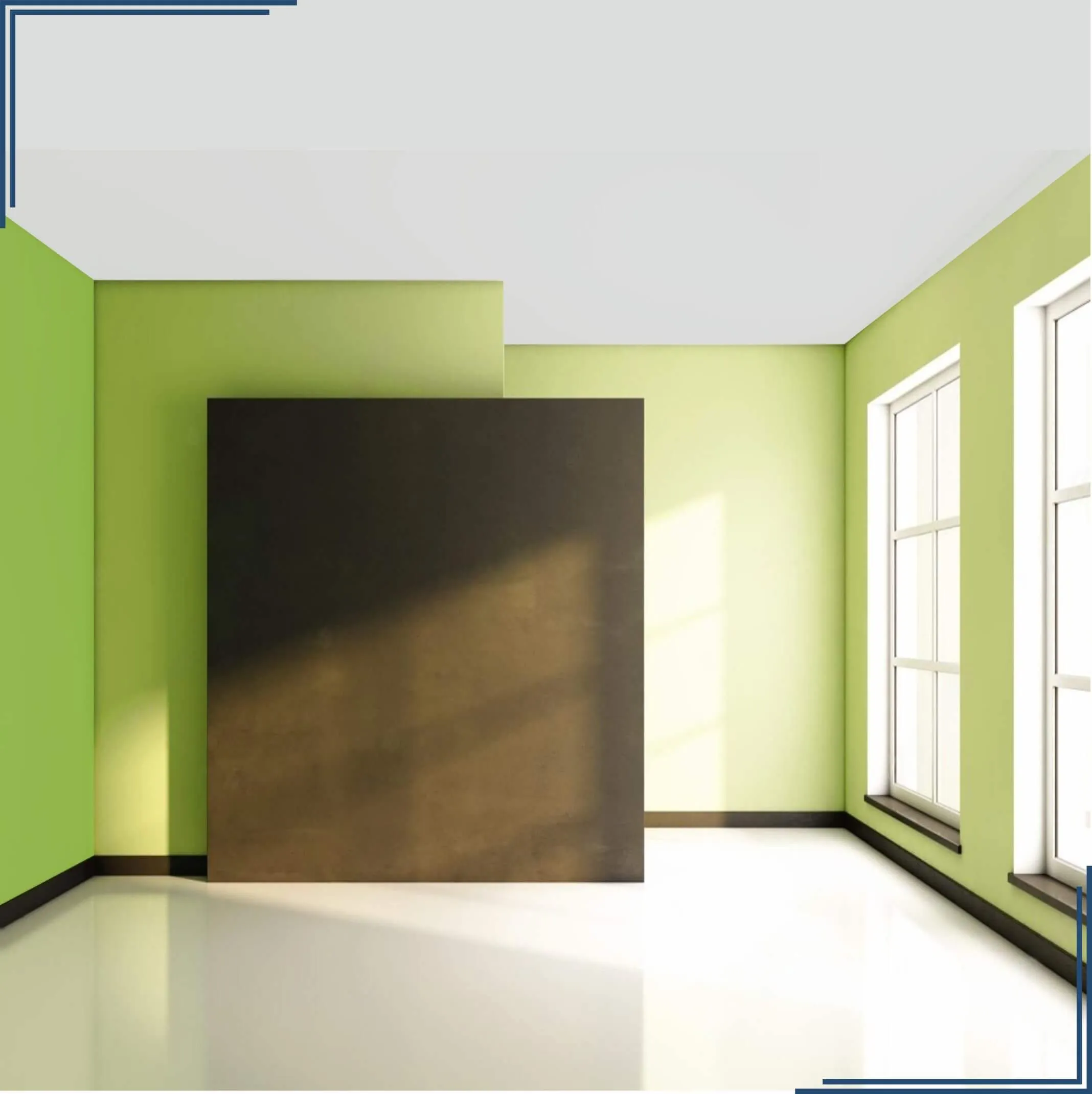DF Gypsum Plaster is a single-coat gypsum plaster that is used as a binding material for Internal finishes, which include, but are not limited to Aerated Blocks & RCC slabs and walls. It provides a seamless, smooth, superior and durable base for application of ornamental finishes over internal walls and ceilings. It acts as a protective cover for bricks and stones. It is a fine composite of Calcium, Sulphate Hemi-hydrate, commonly known as Gypsum Plaster, which requires only water to prepare it for use.
CONTACT AN EXPERT
Gypsum plaster has been used for a long time in the construction sector thanks to its unique and excellent properties. For instance, it offers excellent acoustic and thermal properties while giving levelled walls with a smooth & seamless finish. Thus there is great demand for gypsum plasters. In comparison with sand cement plaster, DF gypsum plaster offers the following advantages.

Quicker Construction: The application of cement sand plaster takes a lot of time. It requires 28 days of water curing, and POP punning is utilized to make the surface smooth. Using gypsum plaster, walls can be completed quickly, and the surface is ready for painting in 3 days (after complete drying).
Sustainable Construction: DF Gypsum plaster is sold in bags of 20 kg that are ready to use. You only need to add water to finish the process. On the other hand, river sand mining is prohibited in many jurisdictions because it harms the ecosystem. The greatest alternative to river sand for all internal plastering applications is a Gypsum Plaster.
Elimination of shrinkage cracks: Sand cement plaster has significant shrinkage issues. This is brought on by improper curing and high heat of hydration. Gypsum plaster has a higher immunity to these issues. Thus it protects it from shrinkage and cracks.
Lighter construction: Gypsum Plaster weighs half as much per cubic meter as typical sand cement plaster hence, plastering walls with gypsum plaster reduces the building's structural load.
The bag is ergonomically designed to make storage and handling easier. These ergonomically designed bags assist in keeping neatly stacked pallets. Special care needs to be taken to ensure dry storage conditions, as moisture shortens the setting time, causes lumps/ nodule formation in the bags and therefore may affect the strength of the set plaster work. Usage of hooks or any sharp tools should be avoided while moving bags from one location to another.
Diamond Plaster is a registered trademark of Diamond Frames Pvt. Ltd